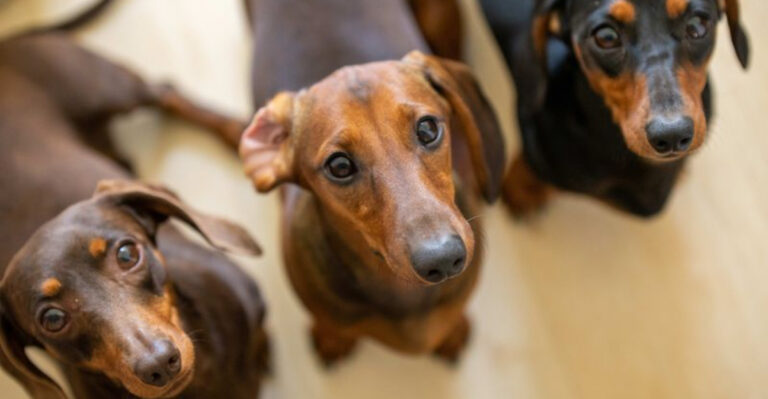32 Realities Of Living With A Cat: What You Need To Know
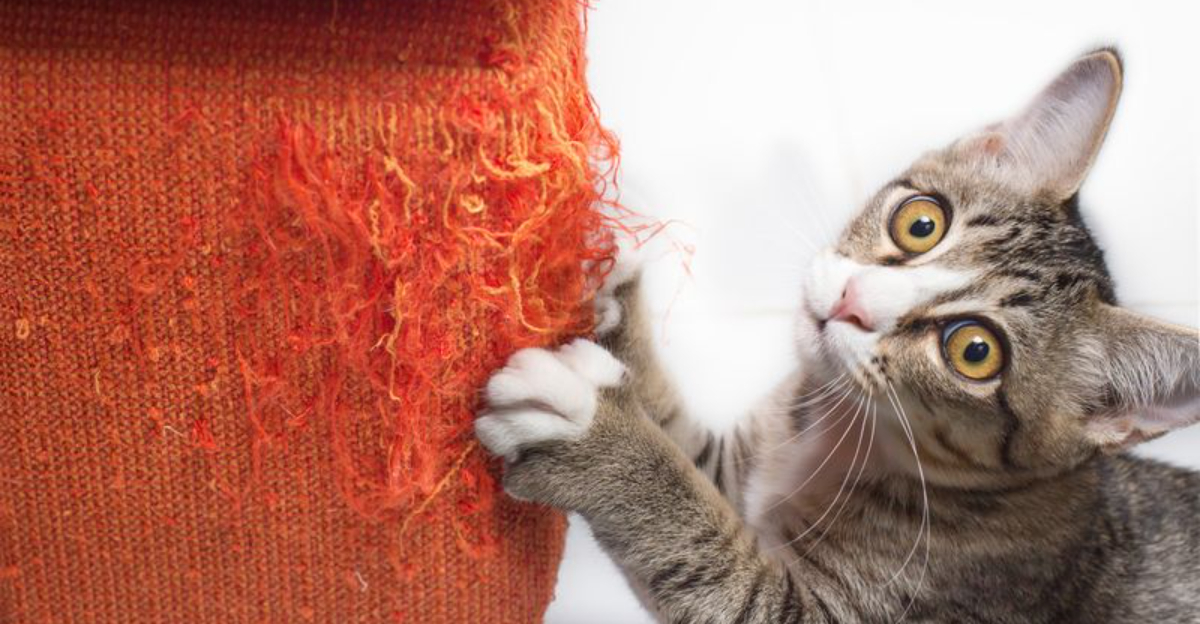
Living with a cat can be both a rewarding and challenging experience. Their quirky behaviors, independent nature, and unique personalities make them fascinating companions, but they also come with their own set of demands and trials.
From dealing with unexpected messes to understanding their mysterious behaviors, cat owners often find themselves navigating a learning curve.
1. Cat’s Love For Sunbeams

Cats often seek out warm, sunny spots to nap in, making any available sunbeam a prime location for them to stretch out and relax.
This love of warmth can sometimes make your cat a little too cozy in the most inconvenient spots.
2. Chronic Kneading
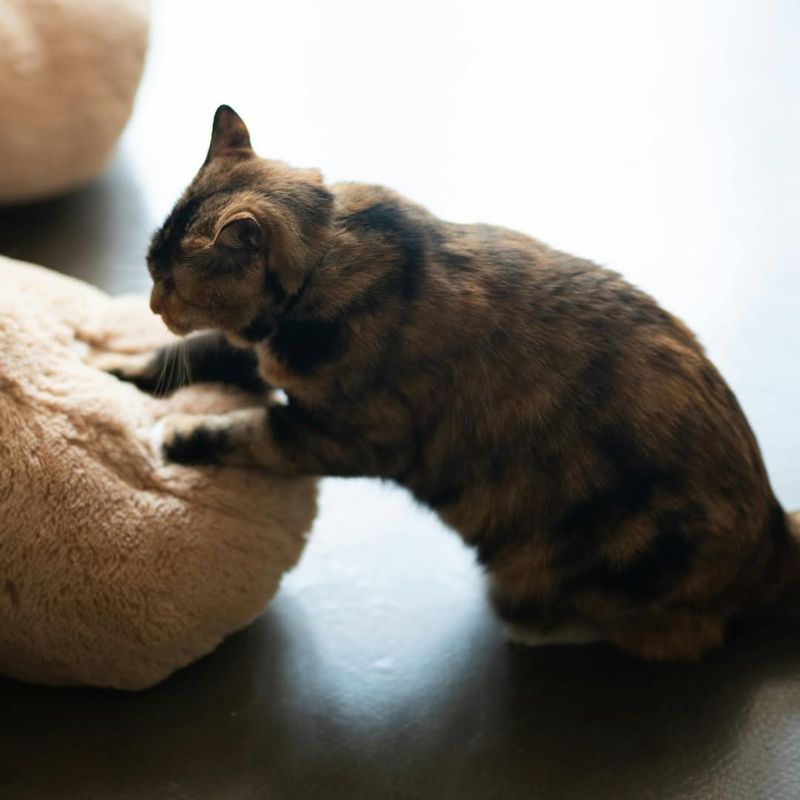
Cats have a natural instinct to knead with their paws, often on soft surfaces like blankets or even your lap. While it’s a comforting behavior that originates from kittenhood, it can sometimes be a bit much, especially if your cat loves to knead on you during the night!
3. Feline Independence
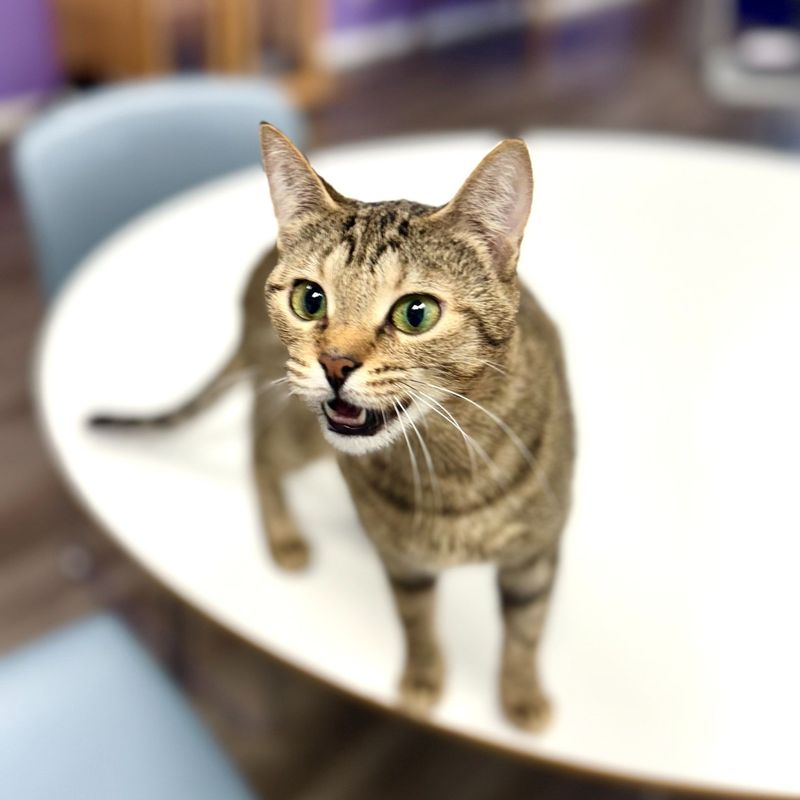
Cats are known for their independent nature. Unlike dogs, who often seek constant attention and companionship, cats enjoy their solitude.
This can be challenging for pet owners who crave interaction and affection. Cats may choose to spend hours alone, watching the world go by from a window perch. This independence is part of their charm but can leave owners feeling neglected. Understanding that a cat’s aloofness is not a sign of dislike is key.
4. Unexpected Messes
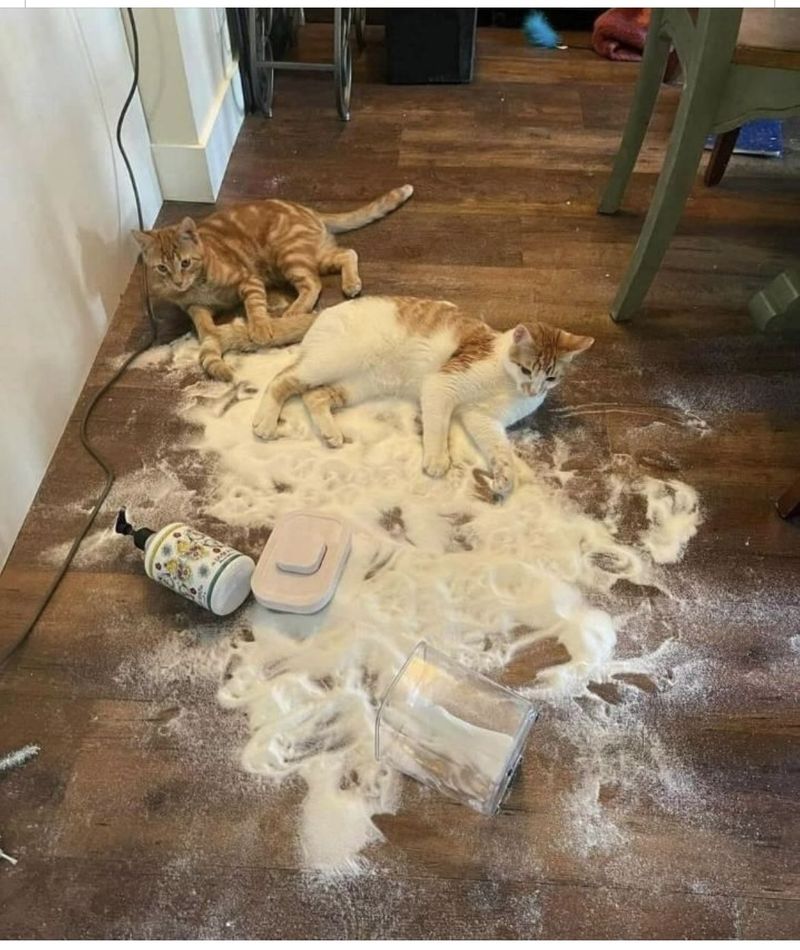
Living with a cat means accepting the occasional mess. Cats are curious creatures, and their explorations can lead to accidents around the house. One moment, everything is in place; the next, a vase is shattered on the floor. This challenge is part of the joy and chaos of having a cat.
Cat owners often find themselves on cleanup duty due to their pet’s inquisitive nature. Whether it’s a knocked-over plant or a trail of litter, these incidents are common. Keeping fragile items out of reach and investing in sturdy, cat-proof furniture can help minimize damage.
5. Allergies And Sensitivities
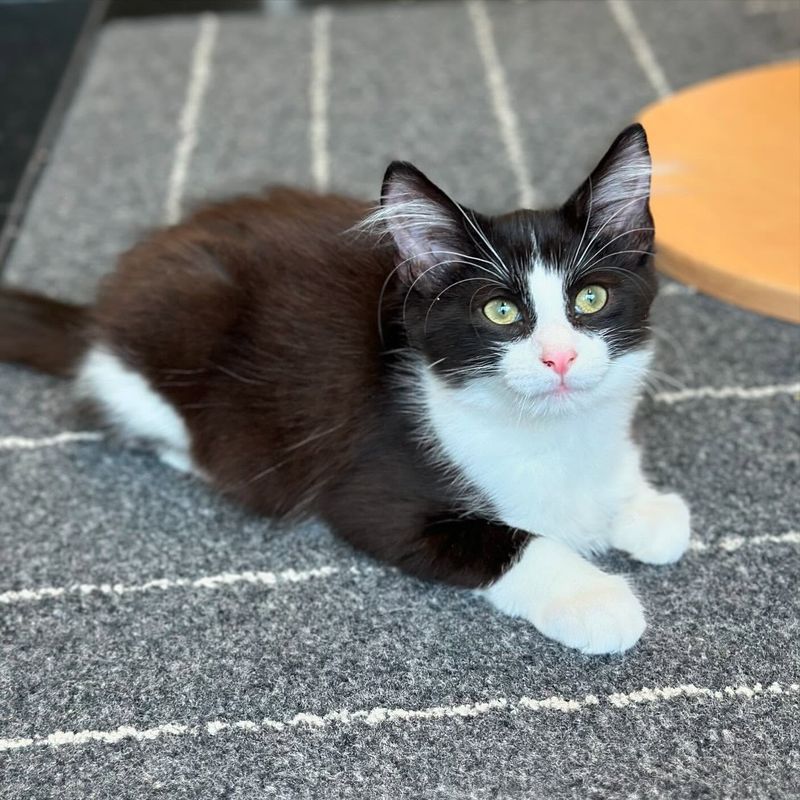
Living with a cat can be a challenge for those with allergies or sensitivities. This common issue can make the joy of having a feline friend a bit complicated. Sneezing, itchy eyes, and skin irritations are some of the symptoms that allergic individuals might experience.
Identifying the source of the allergy, whether it’s from fur, dander, or saliva, is crucial. Regular cleaning, using air purifiers, and keeping certain areas cat-free can help mitigate symptoms.
6. Mysterious Behavior
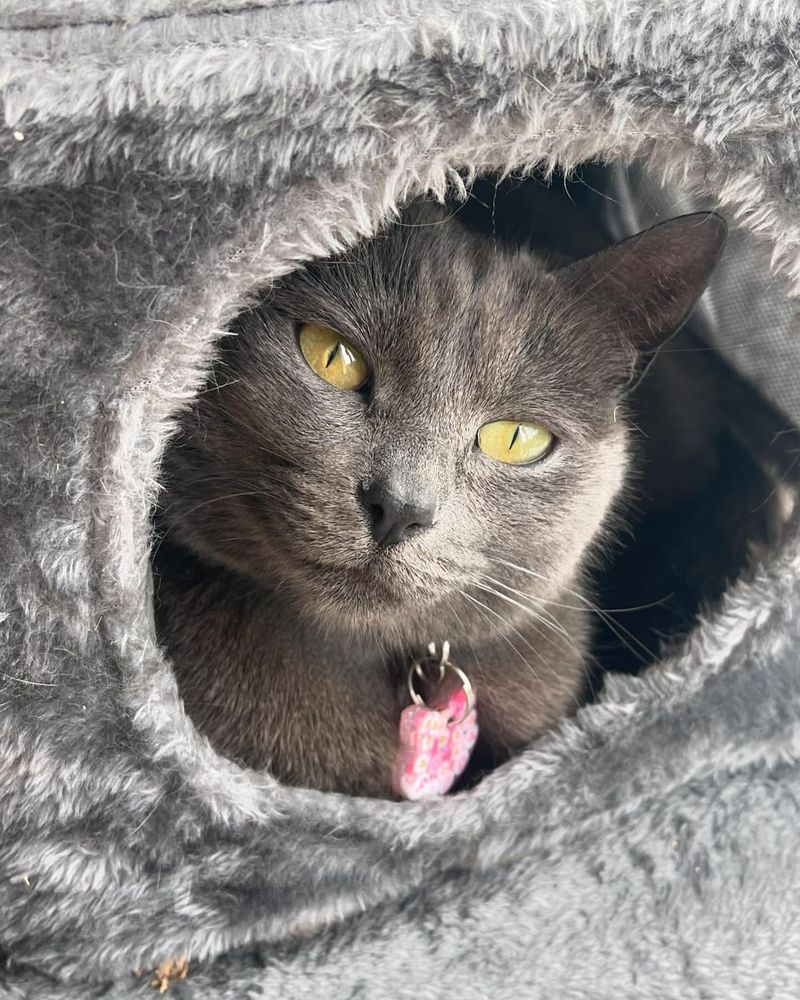
Cats are enigmatic creatures, often leaving their owners puzzled by their behaviors. From sudden sprints across the room to staring at seemingly nothing, these quirks are part of the feline charm. This mysterious behavior can be bewildering but also fascinating.
Understanding a cat’s motivations requires observation and patience. Their actions are often driven by instincts, such as hunting or exploring new territories. These behaviors can seem random to us but make perfect sense in their world.
7. Nighttime Activity
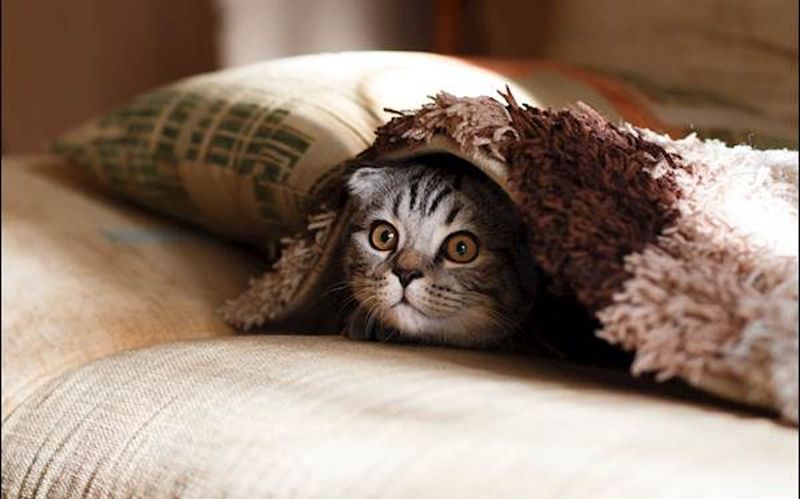
We’ve all heard of zoomies, right? Well, imagine zoomies at night!
Cats are known for their nocturnal habits, which can lead to sleepless nights for their human companions.
While the rest of the house is quiet, cats may decide it’s time to play or explore, leading to disruption. This nighttime activity is part of their natural behavior, as cats are crepuscular, meaning they’re most active during dawn and dusk.
8. Finicky Eating Habits
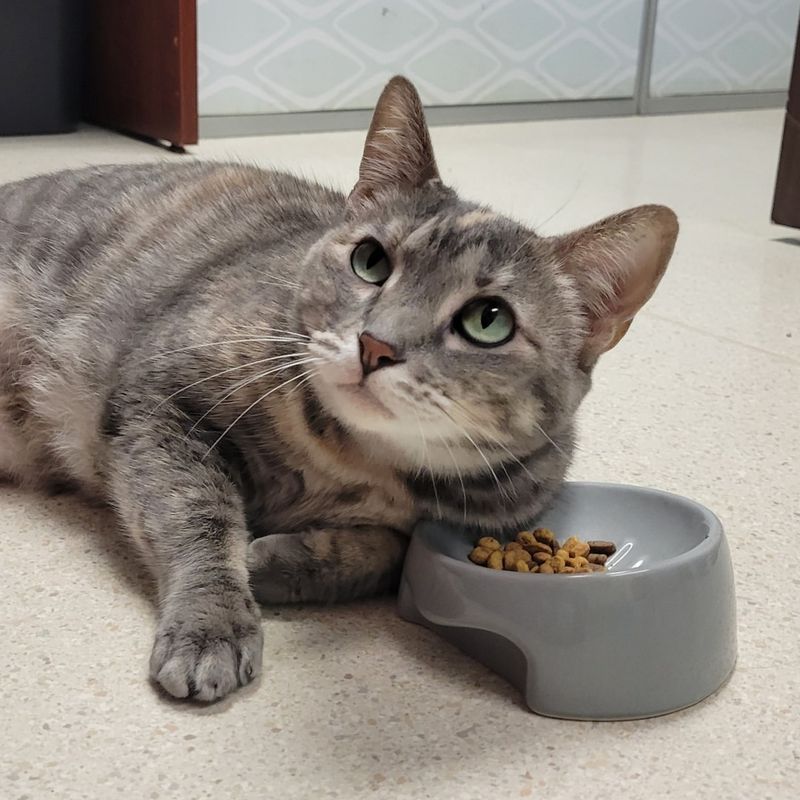
Cats can be notoriously finicky eaters, often turning up their noses at food. This selective nature can make mealtime a source of frustration for owners trying to ensure their pets receive a balanced diet. Understanding their preferences and finding suitable options is part of the challenge.
Experimenting with different textures, flavors, and brands can help identify what your cat enjoys. It’s important to introduce new foods gradually to avoid digestive issues. Consulting with a veterinarian for dietary advice can ensure nutritional needs are met.
Patience is key when dealing with a picky eater.
9. Scratching Furniture
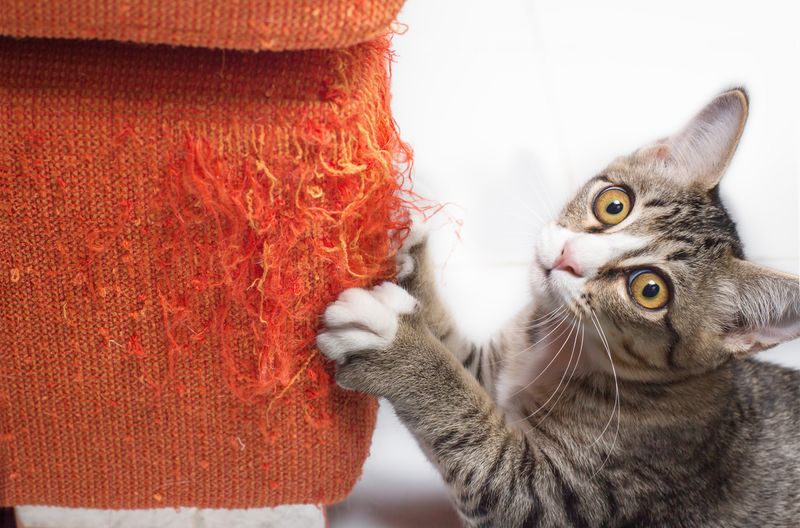
One of the most common challenges cat owners face is furniture scratching. Cats have a natural instinct to scratch, which helps them stretch, mark territory, and wear down old claws. While it’s beneficial for them, it can be frustrating to see beloved furniture bear the brunt of their claws.
Redirecting this behavior is key. Providing scratching posts and pads around the house encourages cats to scratch appropriate surfaces.
10. Hair Everywhere
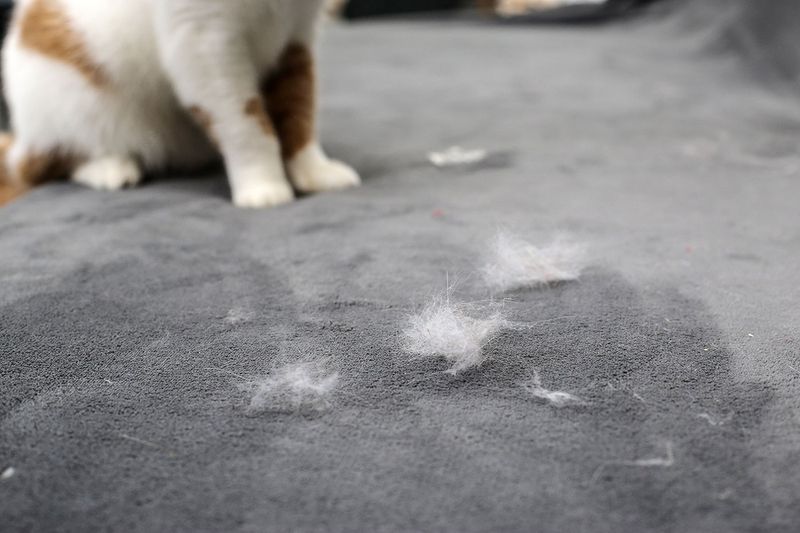
Living with a cat often means dealing with an abundance of fur. Shedding is a natural process, but it can be a challenge to manage the constant presence of hair on clothes, furniture, and floors. This aspect of cat ownership requires diligence and acceptance.
Regular grooming is essential to control shedding. Brushing your cat helps remove loose fur and reduces the amount that ends up around the house.
11. Litter Box Maintenance
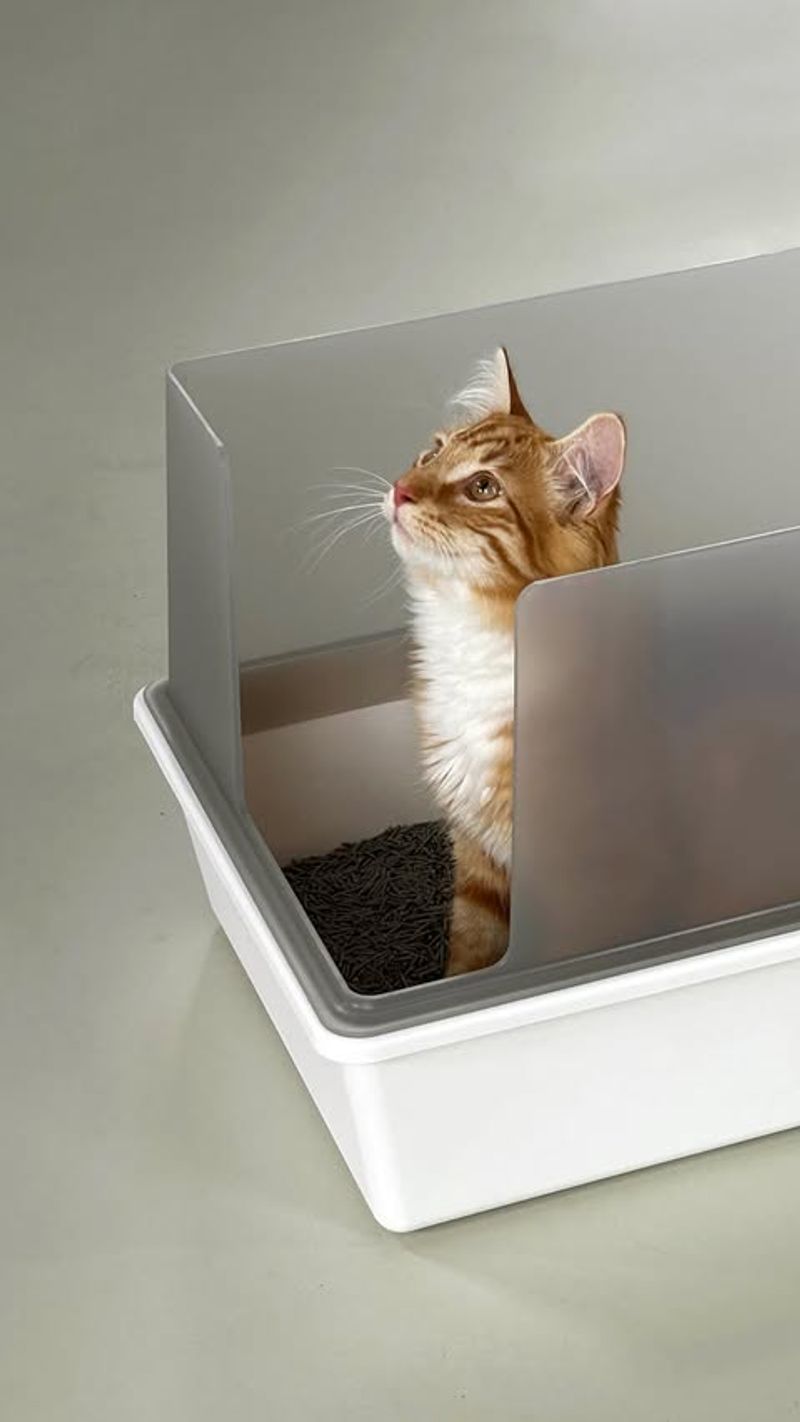
Maintaining a clean litter box is a crucial aspect of cat ownership, yet it can be one of the more unpleasant tasks. Cats are particular about their bathroom habits, and a dirty litter box can lead to unwanted behavior, such as going outside the box.
Regular cleaning and choosing the right type of litter are essential. Clumping litter can make the task easier, while odor-control options help keep the home smelling fresh. It’s important to find a routine that works and stick to it.
12. Curiosity Leading To Trouble
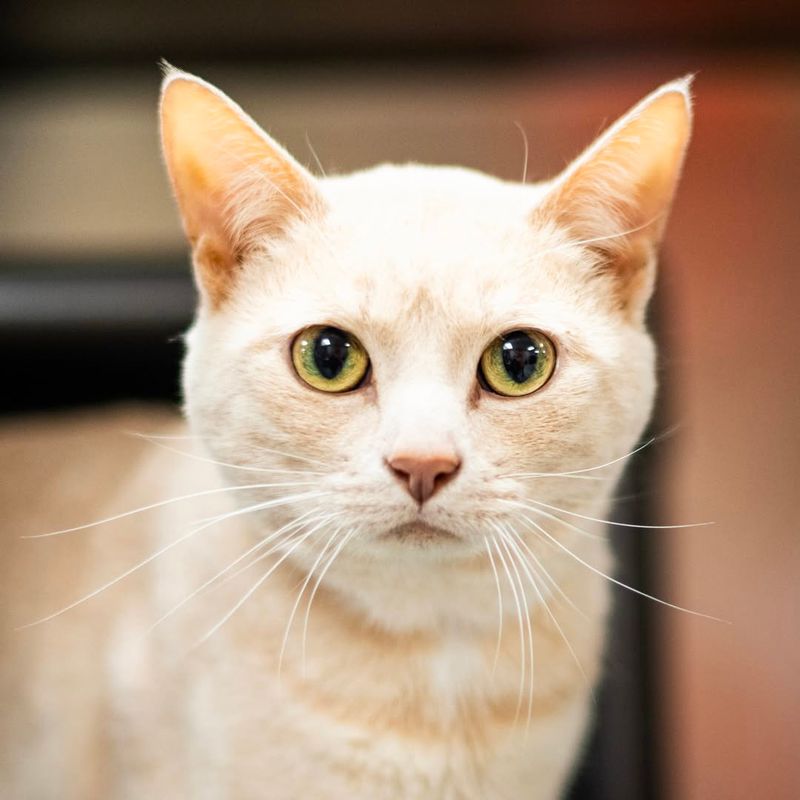
Cats are naturally curious, and this trait often leads them into trouble. Whether it’s investigating a new smell or exploring a forbidden area, a cat’s interest can result in accidents or messes. This challenge is about managing their curiosity while keeping them safe.
Creating a cat-safe environment is essential. Securing cabinets, keeping hazardous items out of reach, and providing engaging activities can help satisfy their curiosity without causing damage.
13. Unwanted Gifts
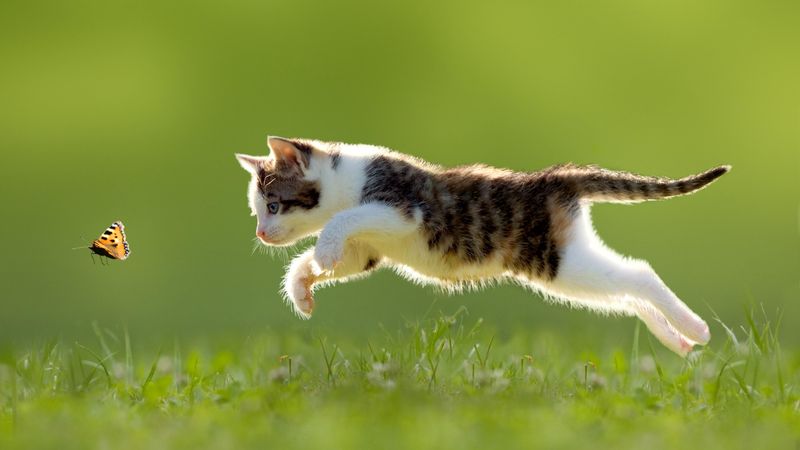
Cats are natural hunters, and sometimes they bring their owners unwanted gifts, like a mouse or bird. While this behavior is instinctual and meant to show affection, it can be unsettling or inconvenient for humans. Understanding this aspect of feline nature is essential to managing it.
Keeping indoor cats can limit their hunting opportunities, reducing the likelihood of finding such surprises. Providing alternative outlets, like interactive toys or puzzle feeders, can help channel their instincts in a more acceptable way.
14. Vocal Demands
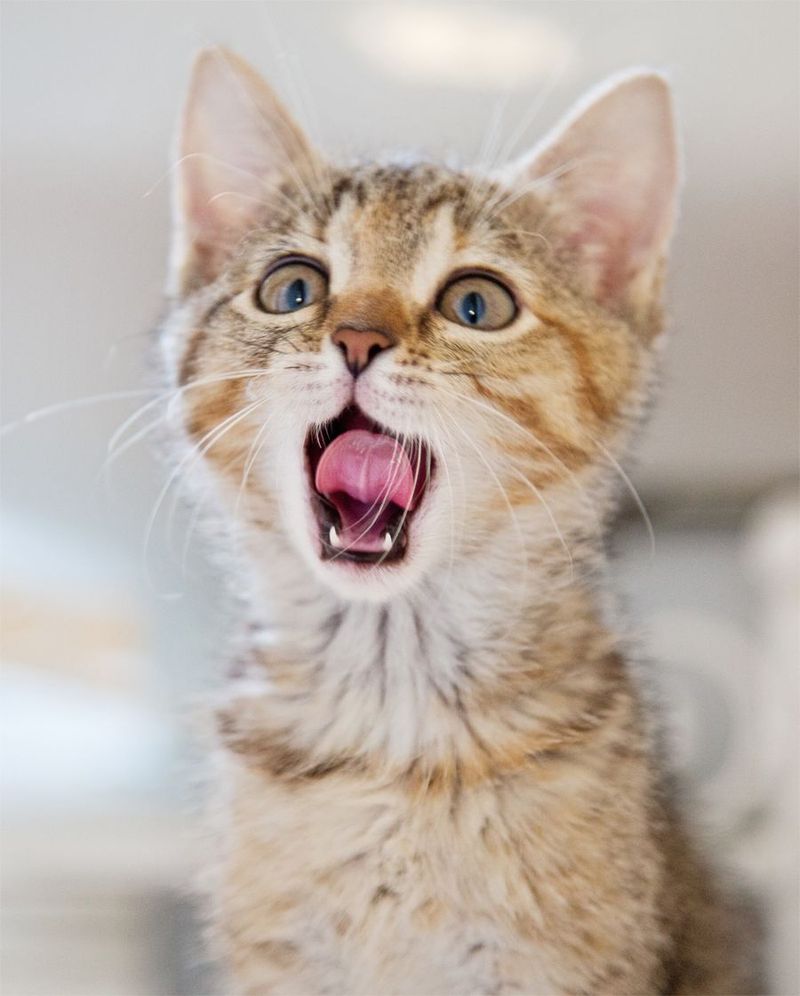
Cats are communicative creatures, and some breeds, like Siamese, are particularly vocal. This can pose a challenge for owners who prefer a quieter household. Understanding a cat’s vocalizations and responding appropriately is key to managing this behavior.
Different sounds convey different messages, from hunger to wanting attention. Learning to interpret these sounds can improve the relationship between you and your cat.
15. Sudden Zoomies

The phenomenon known as “zoomies” is a common behavior where cats suddenly race around the house at top speed. While entertaining, it can also be startling or disruptive, especially during quiet times. Understanding the reasons behind this behavior can make it easier to manage.
Zoomies are often a way for cats to release pent-up energy. Providing ample playtime and exercise throughout the day can reduce these sudden bursts of activity. Interactive toys or a playmate can help expend energy in a controlled manner.
16. Picky Toy Preferences
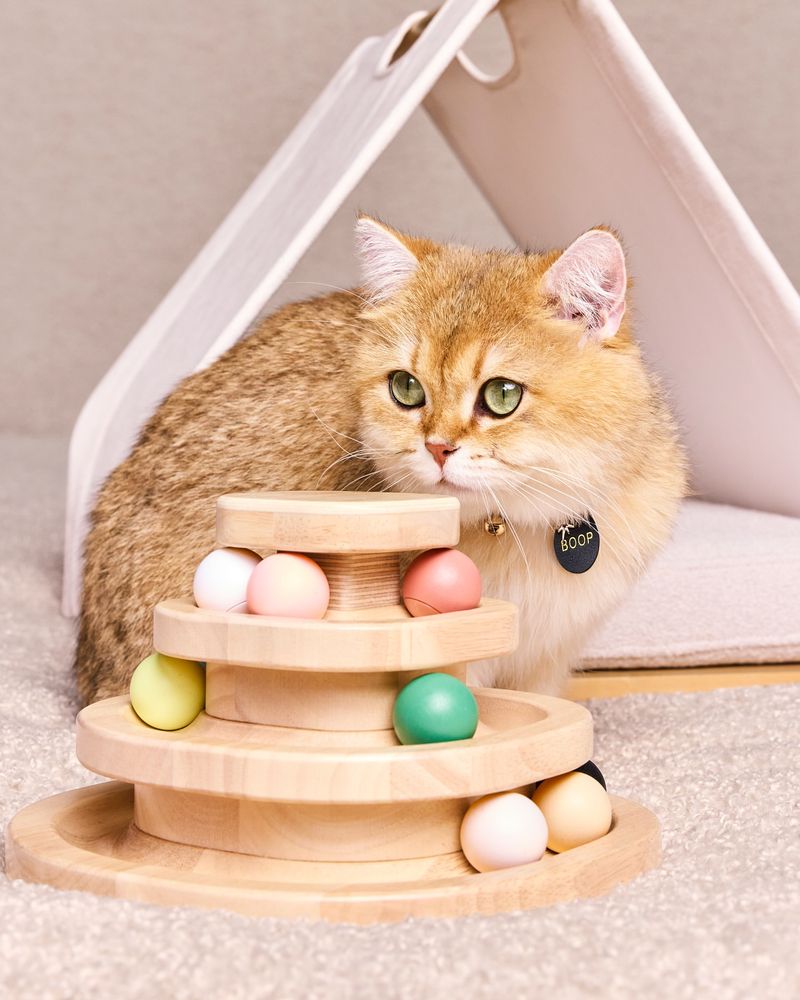
Cats, like people, have individual preferences, and this extends to their toys. One cat might love a feather wand, while another shows interest only in crumpled paper. Finding toys that capture their interest can be a test of patience and experimentation.
Recognizing your cat’s preferences requires observation and creativity. Introducing a variety of toys and observing their reactions can help identify what they enjoy. It’s not always the most expensive toy that wins; sometimes, simple objects provide the most entertainment.
17. Fear Of Strangers
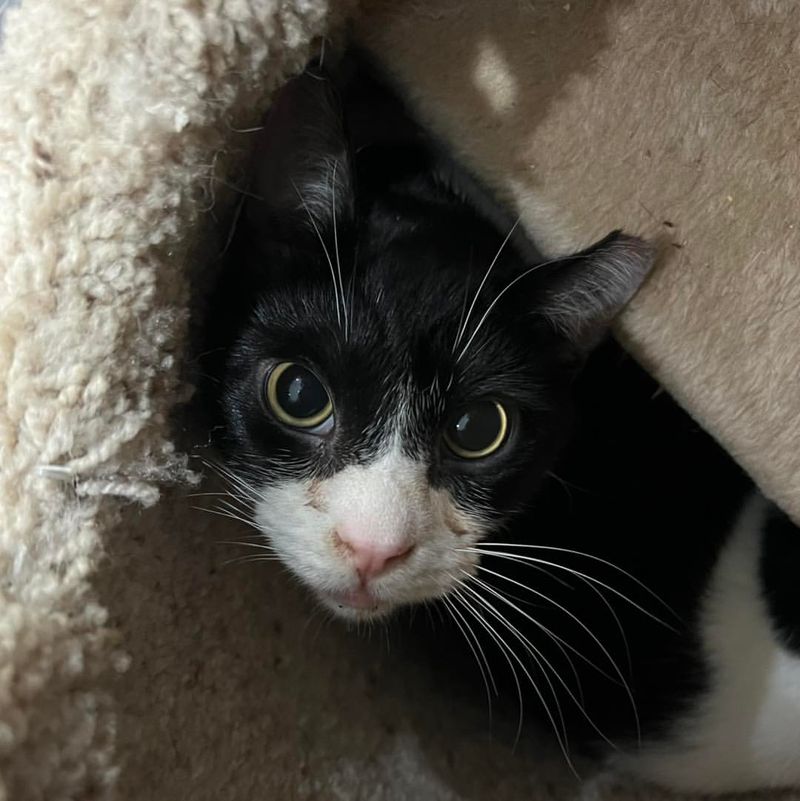
Many cats are wary of strangers, which can be a challenge when hosting visitors. This fear is rooted in their instinctual caution and need for security. Understanding and respecting their boundaries is key to managing this behavior.
Creating a safe space where your cat can retreat during visits can alleviate stress. Allowing them to approach new people on their terms and not forcing interaction is crucial.
18. Love Of Heights
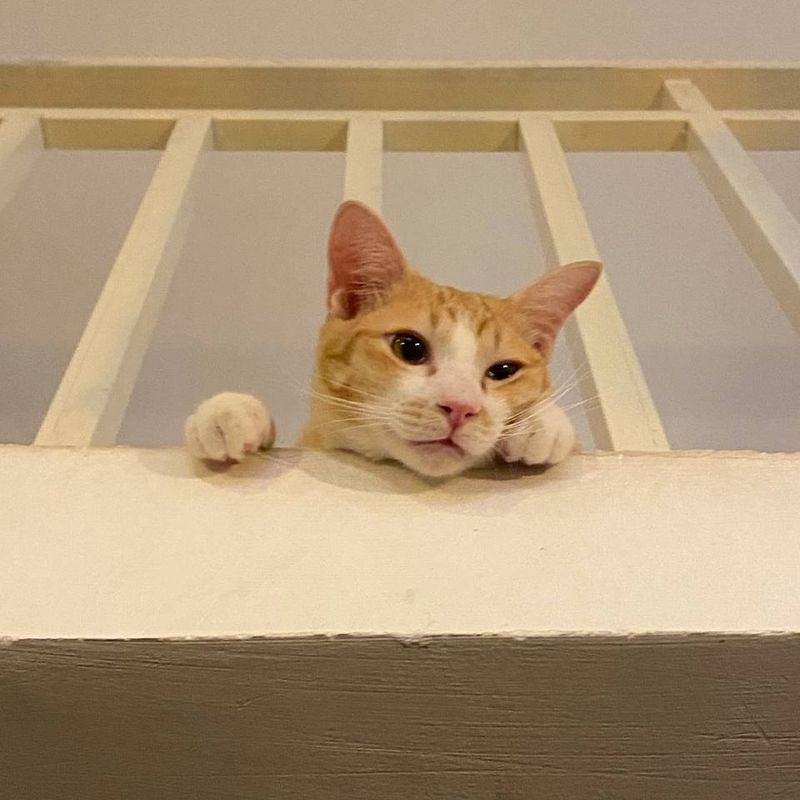
Cats’ love for heights is well-documented, often leading them to perch on top of furniture or appliances. This behavior taps into their instinctual need to observe their surroundings from a vantage point, providing safety and perspective.
While this can be amusing, it also presents a challenge in preventing accidents. Ensuring that potential climbing areas are stable and safe can prevent mishaps. Offering tall cat trees or shelves designed for climbing can satisfy their desire for height without risking damage.
19. Hard-to-Read Emotions
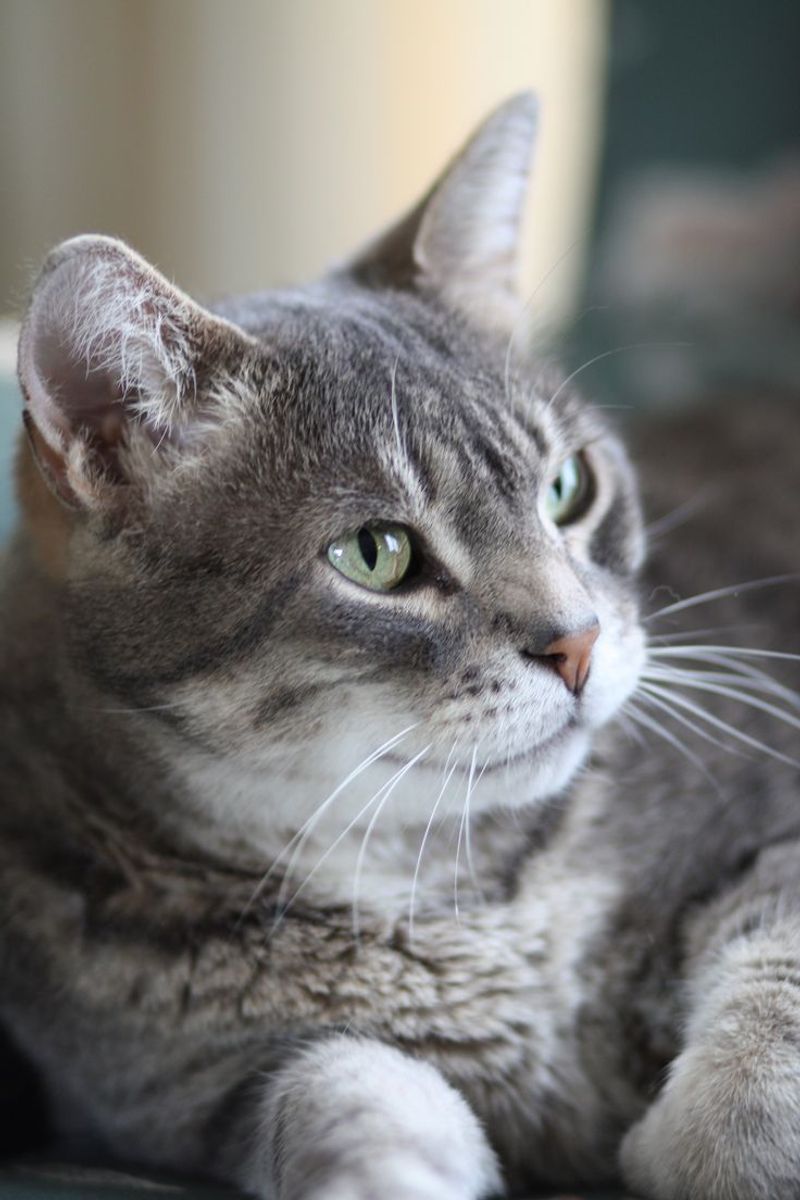
Cats are subtle communicators, making it challenging to interpret their emotions. Unlike dogs, who often express feelings openly, cats convey emotions through small gestures and expressions. This can make understanding their needs and moods a bit tricky.
Learning to read a cat’s body language is essential. Tail movements, ear positions, and eye blinks all provide clues to their emotional state. Spending time observing and interacting with your cat can improve your ability to understand them.
20. Selective Bonding
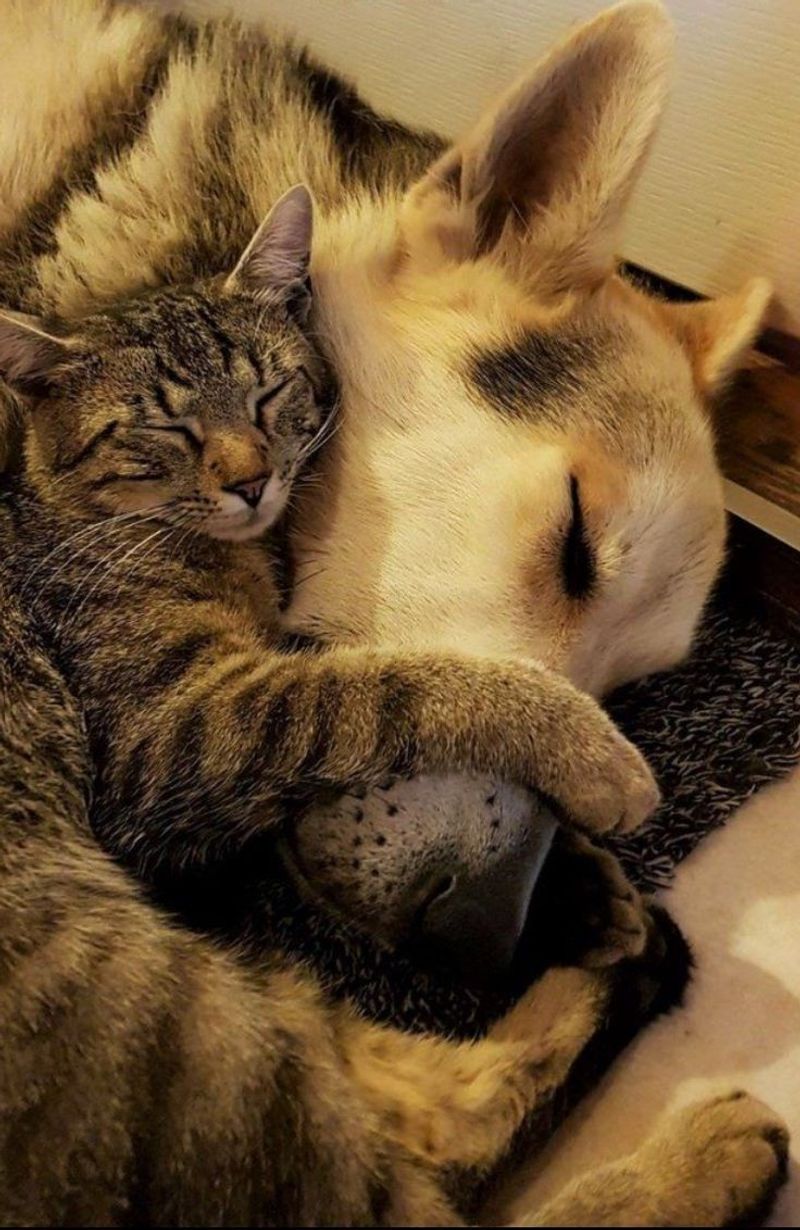
Cats often bond selectively, choosing one person in a household as their primary companion. This selective bonding can be baffling for other members who feel left out. Understanding that this behavior is natural and not a sign of dislike is important.
Cats form bonds based on comfort, trust, and experiences. Encouraging positive interactions with all household members can help foster broader relationships. Offering treats, playtime, and gentle affection can build trust and familiarity.
21. Chasing Shadows

Cats often find entertainment in the simplest things, such as chasing shadows. While amusing, this behavior can be puzzling for owners trying to understand what captures their pet’s attention. This challenge is about appreciating the joy in these simple pleasures.
Chasing shadows is a natural instinct, reminiscent of hunting. Providing alternative outlets like toys or playtime can satisfy their need for stimulation. Encouraging this harmless play can enhance their happiness and well-being.
22. Ignoring Commands
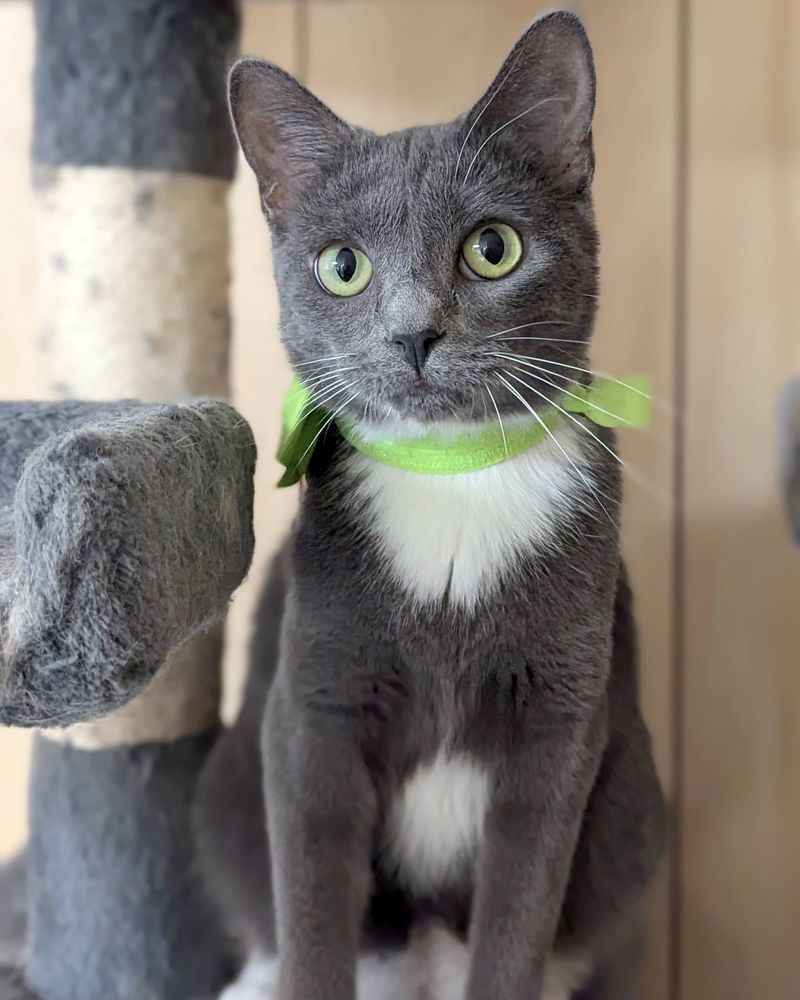
Cats are known for their independent nature, and this often extends to ignoring commands. Unlike dogs, who respond readily to training, cats may appear indifferent, choosing their own path instead. This challenge is about understanding their mindset and adjusting expectations.
Training a cat requires patience and a different approach. Positive reinforcement through treats and praise can encourage desired behaviors. It’s important to keep expectations realistic, focusing on small achievements rather than complete obedience.
23. Curious About Water
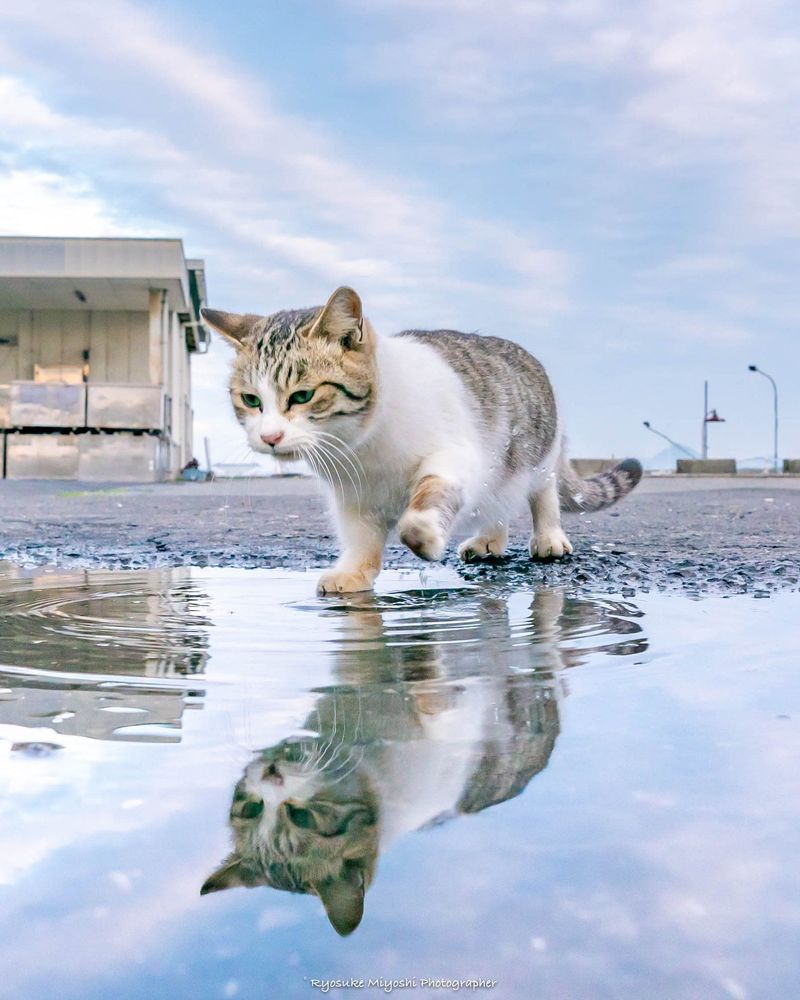
Cats have a complex relationship with water, often curious yet cautious. This interest can lead to unexpected splashes and messes, as well as interactions with water bowls or faucets. Understanding their curiosity and managing their interactions with water is key.
Some cats enjoy playing with water, and providing opportunities for safe exploration can satisfy their curiosity. Using fountains or water toys can offer enrichment without the mess.
24. Wary Of Car Rides
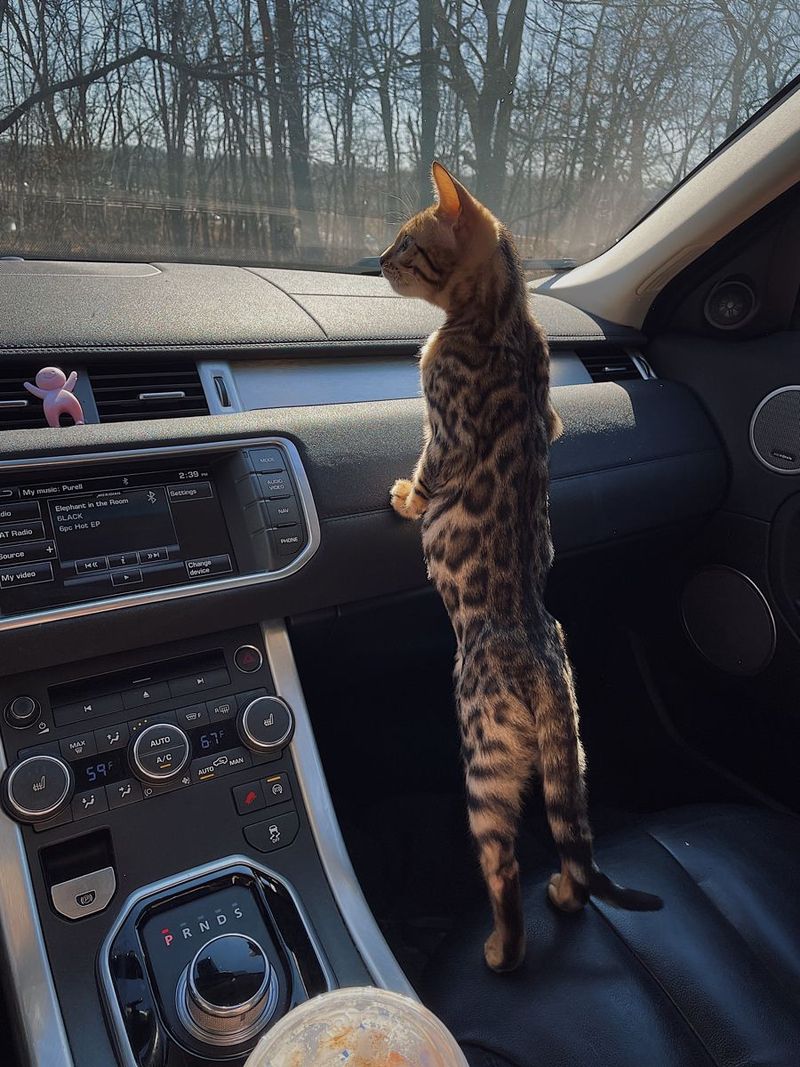
Traveling with a cat can be a challenge, as many are wary of car rides. This fear is often rooted in unfamiliarity and stress, making trips to the vet or new destinations difficult. Understanding their anxiety and finding ways to ease it is essential.
Using a comfortable and secure carrier can help alleviate stress. Gradual acclimatization to car rides, starting with short trips, can build confidence.
25. Picky About Litter Type
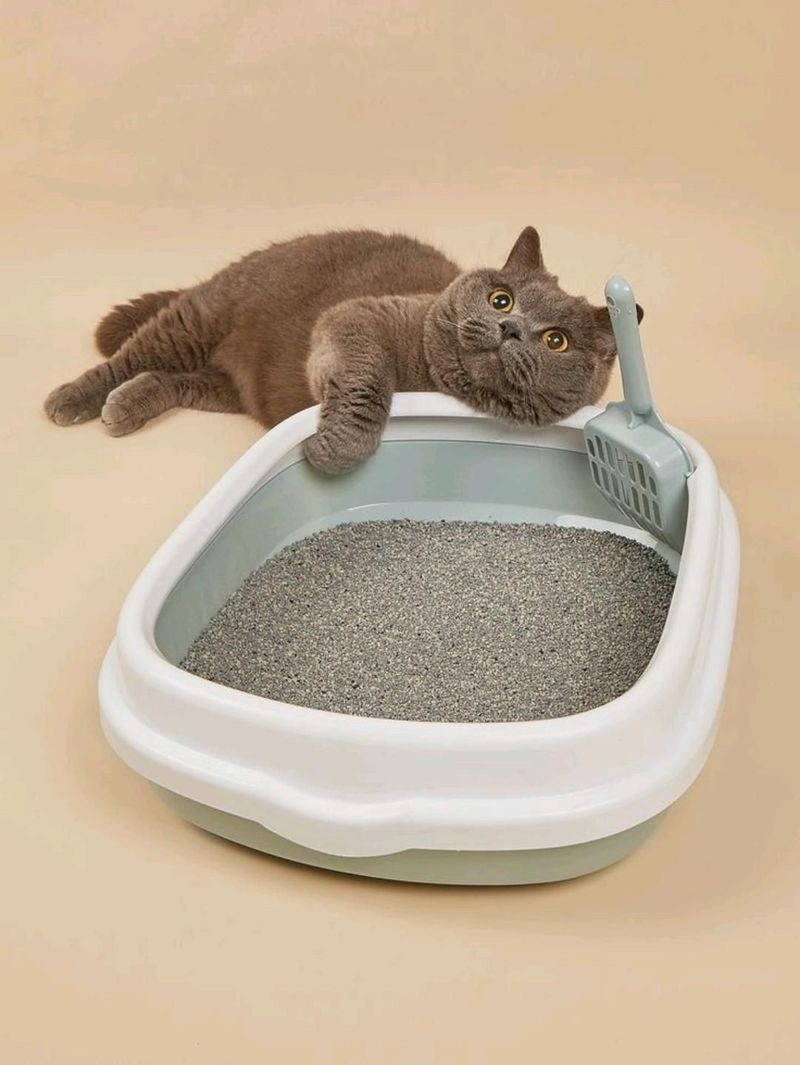
Cats can be particular about the type of litter they prefer, making this a challenge for owners trying to find the right fit. This preference can lead to trial and error, requiring patience and observation. Understanding their needs is crucial to maintaining good litter box habits.
Experimenting with different textures and materials can help identify what your cat prefers. It’s important to monitor their behavior and make adjustments as needed. Introducing changes gradually can prevent stress and encourage acceptance.
26. Hiding In Small Spaces
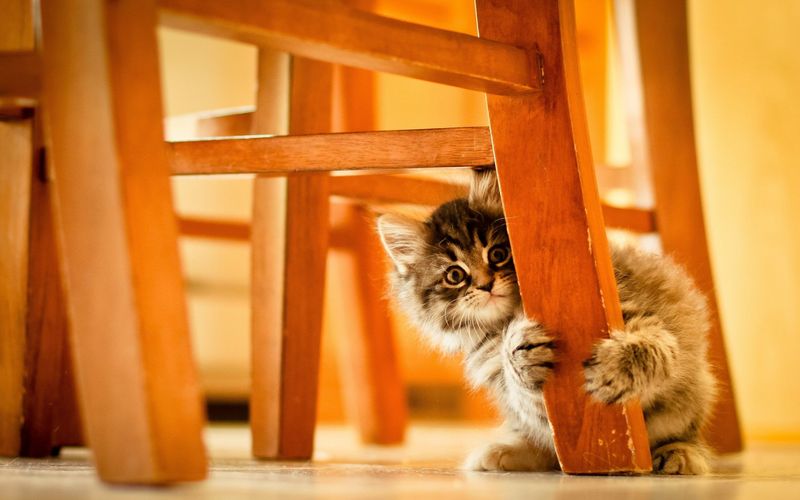
Cats love to hide in small spaces, finding comfort and security in enclosed areas. While this behavior is natural, it can be a challenge when trying to find your pet or ensure their safety. Understanding this instinct and providing safe options can help manage this behavior.
Offering designated hiding spots like cozy beds or covered structures can satisfy their need for security. Ensuring these spaces are safe, free from hazards, and easily accessible is crucial.
27. Fear Of Loud Noises
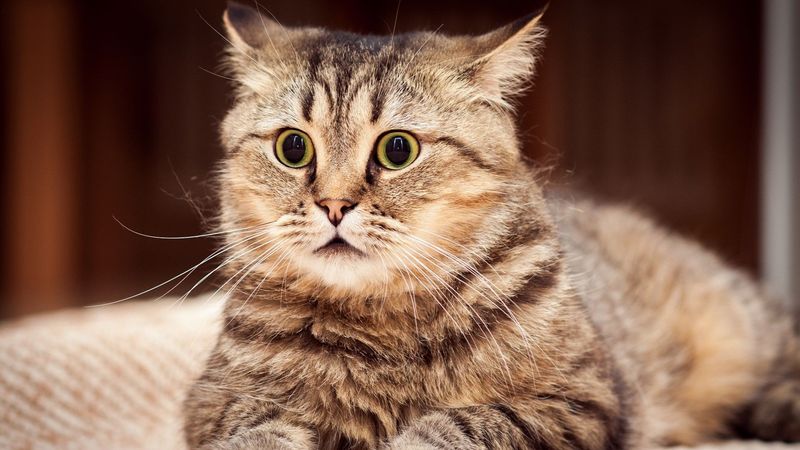
Loud noises like thunderstorms, fireworks, or vacuum cleaners can be terrifying for cats, triggering their survival instincts. This fear can lead to stress and anxiety, making it important to find ways to comfort and protect them. Understanding their sensitivity and creating a calm environment is key.
Providing a safe, quiet space where your cat can retreat during loud events can help them feel secure. Using calming products like pheromone diffusers or playing soothing music can also ease their anxiety.
28. Jealousy Toward Other Pets
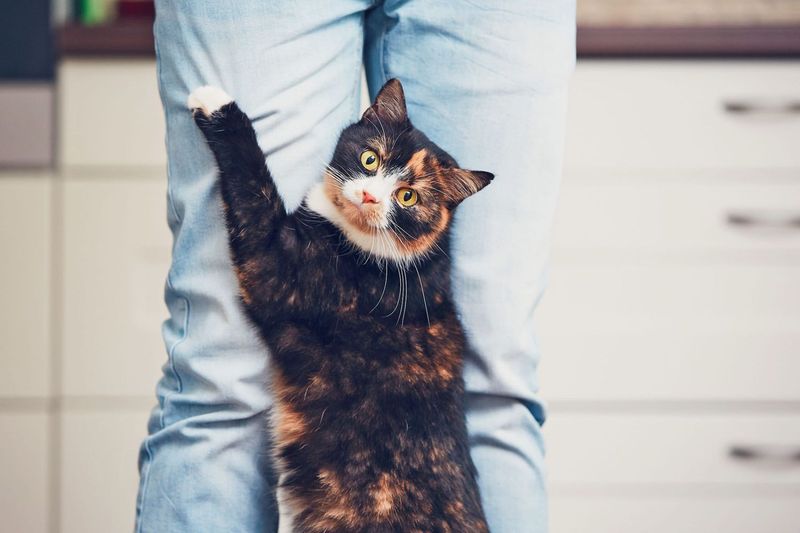
Cats can be territorial creatures, leading to jealousy when other pets receive attention. This behavior can manifest as aggression or withdrawal, making it important to manage relationships between pets carefully. Understanding their need for attention and respect is essential.
Creating individual attention time for each pet ensures they feel valued and secure. Providing separate spaces, toys, and resources can also prevent competition and reduce jealousy. Positive reinforcement for peaceful interactions can encourage harmony.
29. Hunting Instincts Indoors
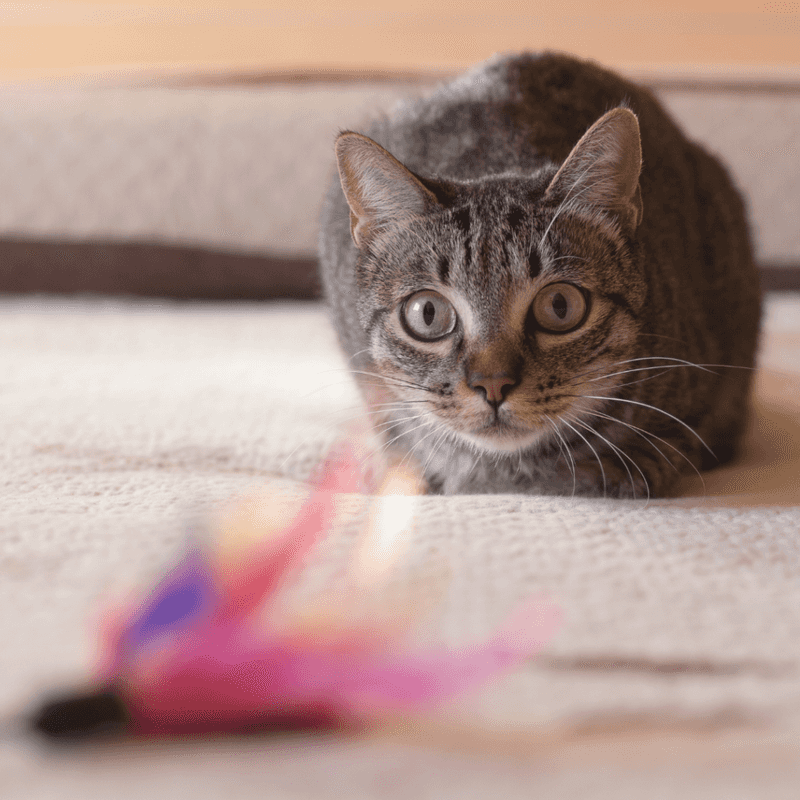
Cats are natural hunters, and even indoor cats retain these instincts. This can lead to playful but sometimes destructive behavior as they “hunt” objects around the house. Understanding and channeling this drive is key to managing it.
Providing toys that mimic prey, such as feather wands or interactive laser pointers, can satisfy their hunting instincts. Regular play sessions ensure they receive enough exercise and mental stimulation.
30. Tail Chasing
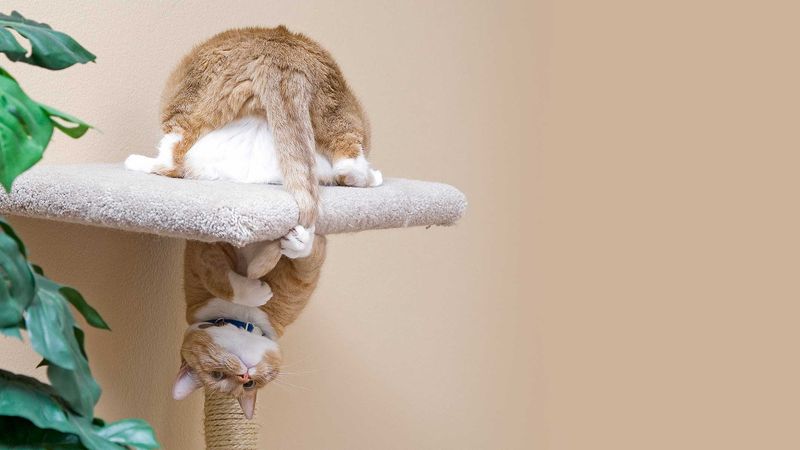
Tail chasing is a behavior that often puzzles cat owners. While it can be a harmless form of play, it may also indicate underlying issues if excessive. Understanding the reasons behind this behavior and managing it appropriately is crucial.
Tail chasing can be a way for cats to entertain themselves. Providing alternatives like toys and interactive play can redirect their energy. If the behavior becomes obsessive, consulting with a veterinarian can rule out medical concerns.
31. Sleeping In Odd Places
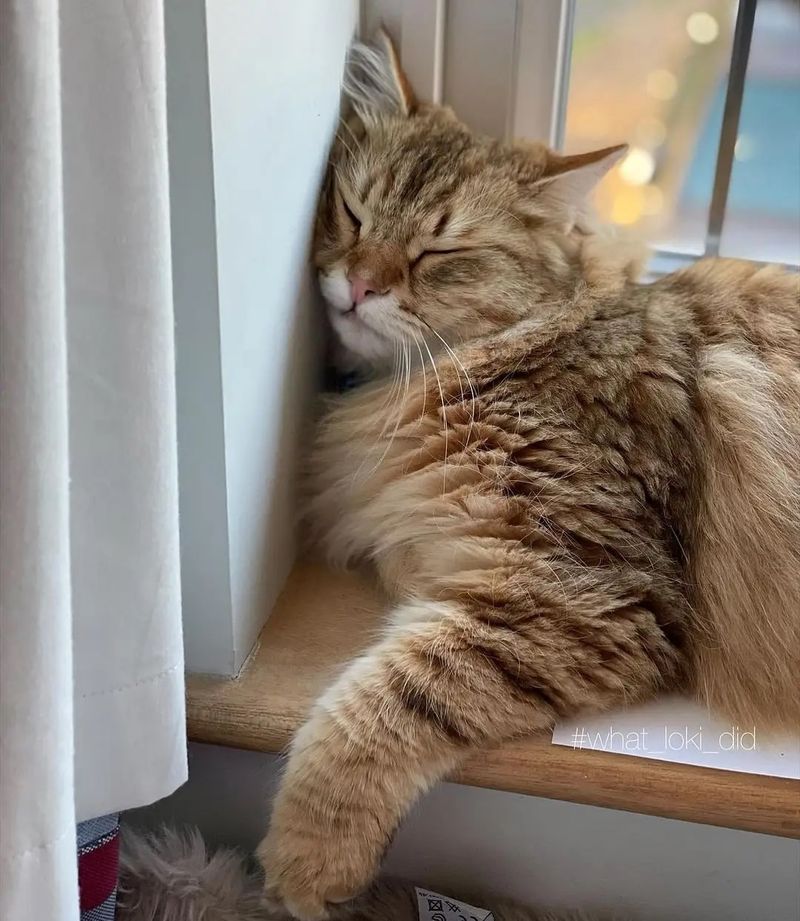
Cats have a knack for choosing the oddest places to sleep, from laundry baskets to laptop keyboards. While this behavior can be amusing, it also poses challenges in maintaining household order. Understanding their preference for cozy, enclosed spaces can help manage this habit.
Providing designated sleeping spots like beds or blankets can offer comfort without disruption. Encouraging their use by placing them in favored locations makes them more appealing.
32. Obsessive Grooming
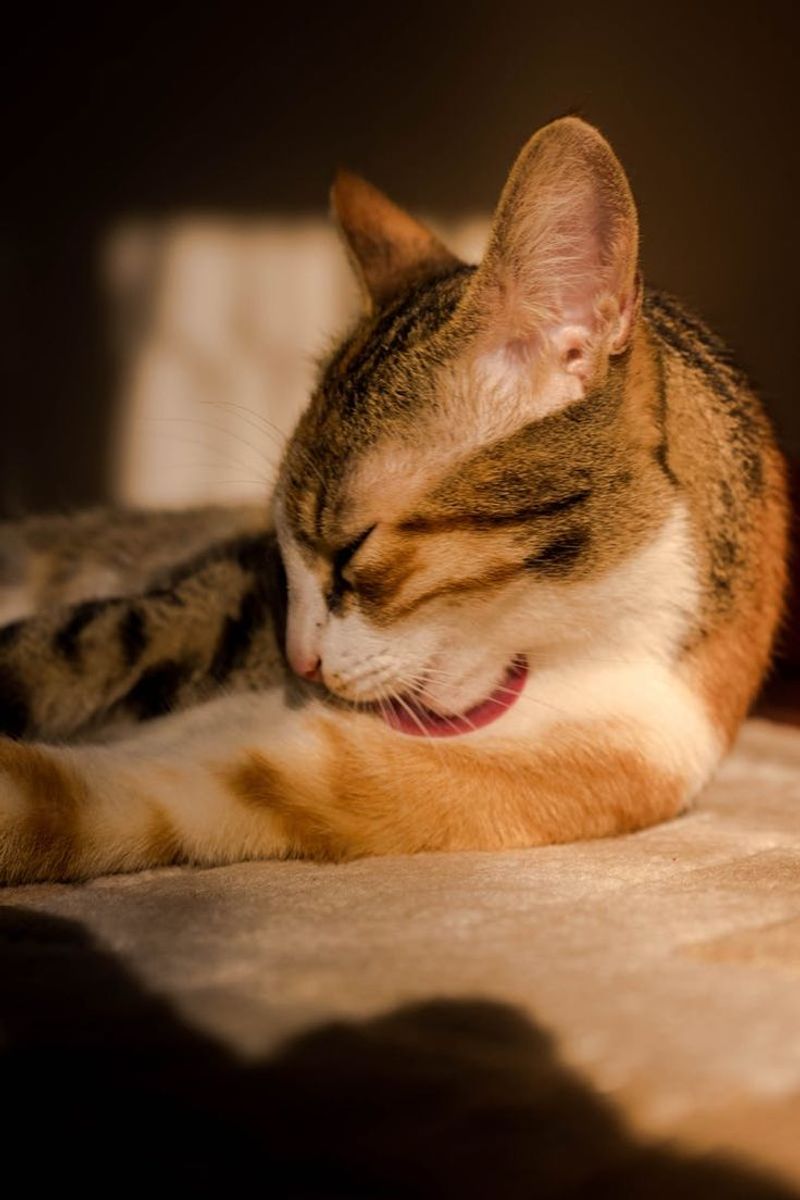
Cats are known for their grooming habits, but obsessive grooming can lead to problems like hairballs or skin irritation. Understanding the reasons behind this behavior and managing it effectively is essential.
Regular grooming is healthy, but when it becomes excessive, it may indicate stress or underlying health issues. Providing environmental enrichment and addressing potential stressors can help alleviate the behavior. Consulting with a veterinarian for guidance is also important.
Though it can be concerning, a cat’s grooming routine reflects their desire for cleanliness and well-being.


